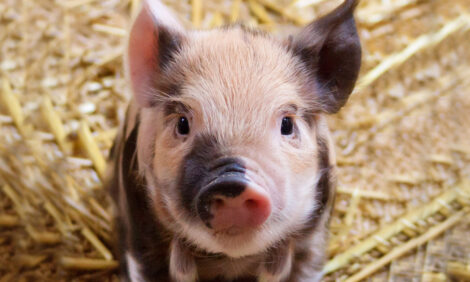



PRRS with Special Reference to Clinical Aspects and Diagnosis
Porcine Reproductive and Respiratory Syndrome (PRRS) emerged as a disease with clear symptoms, including reproductive problems in sows, high mortality of neonatal piglets as well as respiratory disease and mortality in piglets but it has since been linked to a wide range of clinical signs.Key Messages
- The epidemic reproductive and respiratory disorders in sows last normally one to three months.
- Since PRRSV became endemic reports of reproductive losses and increase of respiratory problems and poor performance of finishing pigs are very common.
- In infected nursery and grower pigs respiratory disease is reported, and referred to as PRDC.
- In these cases, there is a higher-than-usual incidence of secondary infection resulting in growth rate reduction and increased mortality.
Article Brief
PRRS initially emerged with remarkable outbreaks, with extensive reproductive problems in sows, high mortality of neonatal piglets as well as respiratory disease and mortality in piglets. With time, other clinical signs (a wide range) were also typically reported.
Epidemic phase
In this phase, PRRSV is characterised by extensive reproductive disorders (in sows) for one to three months. Due to the infection, sows show anorexia, which has been referred in some cases as "rolling inappetence". Also, they can show respiratory signs, fever or even die.
The typical reproductive problems reported are: abortion, premature farrowing, higher number of stillborn piglets, foetal death with or without mummification and neonatal mortality. Also, some authors have reported cyanosis of ears, abdomen and vulva.
In weaned piglets and fattening pigs, the clinical picture is basically respiratory disease, increased mortality and slow growth. Also, PRRSV is frequently aggravated by secondary infections. PRRSV infections are normally age-dependent so the severity of the disease is higher in nursery than in fattening pigs, which can suffer subclinical forms of the disease.
Endemic phase
PRRSV can persist in affected farms for years and currently most of the producing countries are in an endemic phase of the disease. Since PRRSV became endemic, reports of reproductive losses and increases in respiratory problems and poor performance of finishing pigs are very common.
There are few field studies of the endemic course of the disease but it is accepted that PRRSV present in most of the cases in a subclinical form without great influence on production parameters. In naïve sows, periodic reproductive failure is reported.
In infected herds respiratory disease problems, particularly in nursery and grower pigs, have been reported, referred to as PRDC.
In these cases, there is a higher-than-usual incidence of secondary infection, resulting in growth rate reduction and increased mortality.
Reference
G. Nodelijk. 2002. Porcine Reproductive and Respiratory Syndrome (PRRS) with special reference to clinical aspects and diagnosis. A review. Veterinary Quarterly. 24(2): 95-100.
Find out more about diagnostics here.
June 2015







